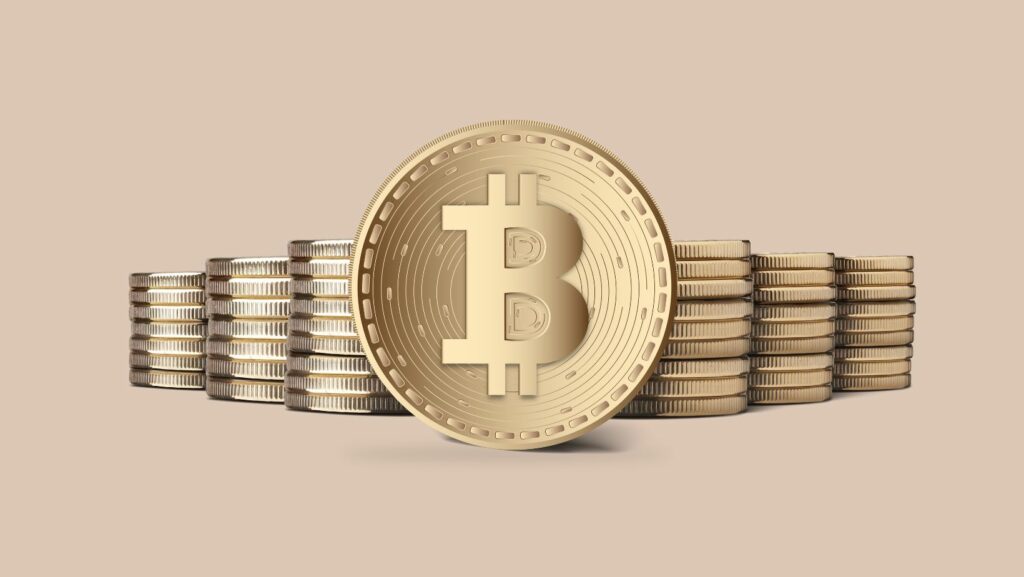Are you ready to set up your Bitcoin wallet and start trading Bitcoin on the blockchain? If so, then this blog is for you! In this blog, we will cover everything you need to know about setting up a Bitcoin wallet, including how to choose the right wallet for you, how to keep your Bitcoin secure, and how to trade Bitcoin on the blockchain. So let’s get started!
What is a Bitcoin Wallet and Why Do You Need One?
A Bitcoin wallet is simply an app, website, or device that manages Bitcoin private keys for you. This guide will show you how to create a bitcoin wallet and select the best one for you.
There are generally three different types of Bitcoin wallets: software wallets, hardware wallets, and paper wallets. Software wallets are mobile applications that connect to your Blockchain account and Officer trading account. Hardware wallets are physical devices that look like USB drives and store your private keys offline. Paper wallets are Bitcoin private keys printed on a piece of paper. Bitcoin wallets secure funds by guarding our private keys. These private keys act as the proof of ownership for our Bitcoins. As such, a Bitcoin wallet is like a key to your safe deposit box on the Blockchain network. There is no way to access and spend your Bitcoins without your private keys. Therefore, it is important to keep your private keys safe and secure.

Creating a Bitcoin Wallet is simple and easy to do. there are many different types of Bitcoin wallets available today, each with its own unique set of features and benefits. To create a new Bitcoin wallet, simply choose the type of wallet that you would like to use from the list below and follow the instructions provided.
How to Set up a Bitcoin Wallet: Step-by-Step Guide
In this guide we will walk you through setting up your very own bitcoin wallet. By the end of this guide you’ll have a better understanding of how wallets work, how to use them and which one is best for you.
Bitcoin wallets are essential for digital currency users. Without a bitcoin wallet, you cannot send or receive bitcoin payments. So before we get started, let’s look at what makes a bitcoin wallet.
A Bitcoin wallet is like a bank account for your Bitcoin. It allows you to receive bitcoins, store them, and then send them to others. There are two main types of wallets: software and web-based wallets.
Software wallets are installed on your computer and they give you full control over your bitcoins. Web-based wallets are hosted by a third party and they offer convenience and security at the expense of some control over your private keys.
We will go over the different types of Bitcoin wallets in more detail later but for now, let’s get started with setting up a software wallet.
Different Types of Bitcoin Wallets
There are different types of Bitcoin wallets, each offering unique features and benefits. Choosing the right Bitcoin wallet is essential for keeping your cryptocurrency safe and secure.
Hot wallets are Bitcoin wallets that run on Internet-connected devices like computers, phones, or tablets. Hot wallets are convenient because they allow you to quickly transact with Bitcoin. However, because hot wallets are constantly connected to the Internet, they are also more vulnerable to hacking attacks.
Cold wallets are Bitcoin wallets that are not connected to the Internet. Cold wallets are considered to be more secure than hot wallets because they are not susceptible to hacking attacks. However, cold wallets can be difficult to set up and use, and they may not be suitable for all users.

Hardware wallets are physical devices that store your Bitcoin offline. Hardware wallets are considered to be the most secure type of Bitcoin wallet because they cannot be hack into by malware or viruses. However, hardware wallets can be expensive and may not be suitable for all users.
How to Choose The Right Bitcoin Wallet for You
When it comes to Bitcoin, there are two main types of wallets: hot wallets and cold wallets. Both come with their own set of pros and cons.
Hot Bitcoin wallets are software that you install on your own computer or mobile device. They give you full control over your Bitcoin, but they also come with the risks of online security, like all hot wallets. They’re convenient because you can use them to make Bitcoin transactions quickly and easily. But you need to be careful with them, because if they’re hacked or if your computer gets infected with malware, your Bitcoin could be stolen.
Cold Bitcoin wallets are offline devices that store your Bitcoin in a secure environment. They’re not connected to the internet, so they can’t be hacked. But they’re less convenient to use because you need to physically connect them to a computer to transact with them. And if you lose them, you lose your Bitcoin.
How to Trade Bitcoin on Blockchain
A Bitcoin wallet is simply an app, website, or device that manages Bitcoin private keys for you. This guide will show you how to create a bitcoin wallet and choose the best one.
Wallet apps can be a little tricky to use at first. But once you get the hang of it, they’re actually quite easy. The first thing you need to do is download a wallet app and create an account.
Once you have an account, you’ll need to find a way to get Bitcoin into your wallet. The easiest way to do this is by using a Bitcoin exchange like Coinbase or Kraken. You can also buy Bitcoin from someone in person.
Once you have some Bitcoin, you can use it to buy things or send it to someone. All you need is the recipient’s address (a string of characters that looks something like this: 1BvBMSEYstWetqTFn5Au4m4GFg7xJaNVN2).
To send Bitcoin, just go to your wallet app and enter the recipient’s address into the “send” field. Then enter the amount of Bitcoin you want to send and hit “send”. That’s it!
Bitcoin Wallet Security
It is essential to understand that anyone who knows your bitcoin wallet’s private key can access and spend your bitcoins. Because of this, it is important to keep your wallet’s private key secure. There are several ways to do this, and the method you choose will depend on how you plan to use your bitcoins.
If you want to use your bitcoins for everyday purchases or as a way to save money, it might be best to keep your bitcoins in a software or mobile wallet. These wallets are convenient because they are usually easy to set up and can be accessed from any device. However, because they are stored on a device that is connected to the internet, they are also more vulnerable to hackers. If you decide to use a software or mobile wallet, be sure to take precautions such as keeping your antivirus software up-to-date and avoiding interacting with unknown or untrusted websites.
If you want to use your bitcoins for investing or trading, it might be best to keep them in a hardware wallet. Hardware wallets are physical devices that store your Bitcoins offline and away from potential threats. They can cost anywhere from $50-$100, but they offer an extra layer of security that is worth the investment if you plan on holding large amounts of Bitcoin.
FAQs About Bitcoin Wallets
Bitcoin is unique in that there are a finite number of them: 21 million. Satoshi Nakamoto, bitcoin’s enigmatic founder, arrived at that number by assuming people would discover, or “mine,” a set number of blocks of transactions daily.
Every four years, the number of bitcoins released relative to the previous cycle gets cut in half, as does the reward to miners for discovering new blocks. (The reward right now is 12.5 bitcoins.) As a result, the number of bitcoins in circulation will approach 21 million, but never hit it. Is there a limit to how many bitcoins can be created? This question doesn’t have a definite answer, as it depends on how you define “limit”.
For one thing, there’s no hard rule defining when a fork can occur—it could happen at any time. For another thing,, various forks could cause the total supply of bitcoins to increase well beyond 21 million. However, it’s important to remember that each fork represents a change in bitcoin’s protocol—something that requires coordinated effort by all users to upgrade their software. So far there has been relatively little effort expended on preventing forks because most bitcoiners believe they’re a necessary hazard en route to eventual mass adoption.
Conclusion
In order to use Bitcoin, you need a place to store your coins. This is done in a digital wallet. There are many different types of digital wallets, but the most important thing is that you have complete control over your private keys. Private keys are what give you ownership of your bitcoins, so it’s important that you keep them safe and secure.
There are many different ways to set up a digital wallet, but we recommend using Blockchain.com because it’s easy to use and offers a high level of security. Plus, it’s one of the most popular digital wallets in the world!
Once you have set up your digital wallet, you can start buying and selling bitcoins. There are many different exchanges that you can use to buy and sell bitcoins, but we recommend using Coinbase because it’s one of the most popular and user-friendly exchanges in the world.
We hope this guide has been helpful in teaching you how to trade bitcoin on blockchain!



